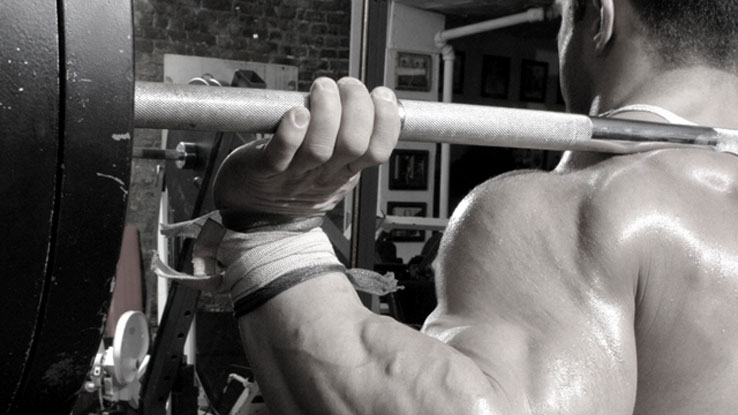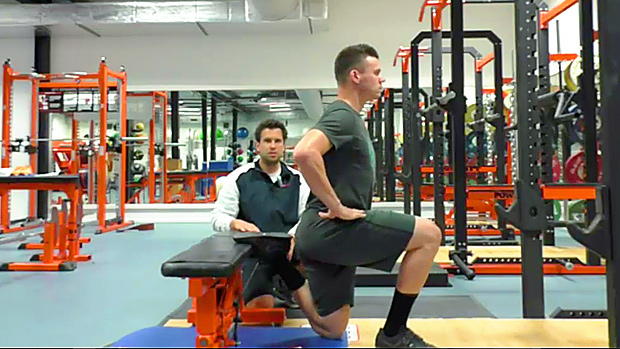Head-Off Glute Bridge Presses
The glute bridge chest press is an excellent exercise for engaging the hips and pecs while simultaneously performing a powerful pressing movement. Unfortunately, some people find it to be aggravating to the upper neck and shoulders because of the compressive forces against the cervical spine.
But the "head-off" variations eliminate these issues and actually feel quite therapeutic to the shoulders and neck while still providing the same lower body benefits as the traditional glute bridge chest press.
These variations allow the neck and cervical spine to elongate rather than being compressed into the floor.
- You can perform these on the floor by lying on an Olympic lifting platform or a thin step/box while leaving your head off the edge. You're looking for a 2 to 4-inch elevated surface. Anything less will cause the head to run into the floor.
- You can also do these lying on a bench instead of the floor. This one would be my go-to strategy because the narrow bench provides little margin for error in terms of lateral deviations of the feet, hips, and torso, thereby ensuring strict mechanics.
This exercise is highly versatile and can be performed with dumbbells, barbells, and kettlebells. And, if you want more glute and posterior chain activation, these variations can also be performed in a single-leg fashion.
The head-off glute bridge press also provides several additional benefits in terms of functional strength, hypertrophy, and performance. First, driving with the hips and using the shoulders as an anchor point (to push into) helps depress and centrate the shoulders and scapulae. All good.
Second, this variation reinforces hip drive and full body activation when performing chest presses, which is something many lifters struggle with.
Lastly, this represents the most functional and natural method for performing decline chest presses. In fact, this is my go-to strategy when attempting to target the chest with a decline angle.
Most decline benches involve anchoring the body by fixing the back of the knees onto a sit-up style bench, which isn't a natural or functional position. And because the body is essentially hanging by the legs, it's much more difficult to depress the shoulders. Gravity wants to elevate the shoulders (towards the neck) throughout the press.
But by pressing with the legs – like during the glute bridge press – it forces the shoulders to do the opposite and promotes better lat activation and scapular depression.
Decline chest presses are incredibly effective for targeting the chest and pectoral fibers because the shoulders are less involved than with other variations. So if you're going to periodically add in decline presses, ditch the standard decline and replace it with the glute bridge press variation. It's far superior.




